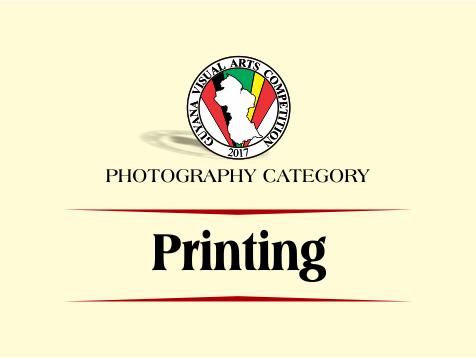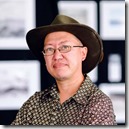At this point, we’re assuming you have already taken the camera out, shot the photograph, downloaded it, and processed it to your liking, it might be in full colour or black and white, and, given that we are not confined to any of the photography sub-genres, your images may be anything from landscapes to portraits, street photography to studio work covering any and all subjects. It’s time to print your entries.
The GVACE does not accept digital files as your submitted artwork, you have to print it out (and have it ready to hang). I seem to recall the brochures for the 2012 and 2014 editions of the competition having a minimum size requirement, but it is absent from this year’s brochure except it advises that the size you chose should be practical for viewing, mounting and displaying the work.
In considering the size at which to print your pieces, there are a few things to consider, I shall touch on three of those although there are likely many more.
Original Image Quality – If you shoot film, the negatives, the enlarging equipment or scanner quality will play parts in this, if you shoot digital then it will be the original size of the JPG or RAW image that your camera shot. Tablets, cellphones and other mobile devices as well as many point-and-shoot cameras have small sensors and therefore have some of the lower quality images, but many modern devices have quite capable cameras and many of those images can be printed relatively large. Your DSLR or Mirrorless cameras will likely not have an issue (unless, of course, you set it to only record small JPGs, then you only have yourself to blame).
Know your software, and at least understand the resolution of your images when scaled to various sizes in the software. While you can possibly get away with using 72dpi screen resolution images, it’s definitely not advisable, your image should be around 240dpi or higher at the required size when printing. If an image is printed at too low a resolution, it will pixellate and the degradation in image quality will be obvious, and likely result in a very poor print. If it cannot print large, don’t force it, use a small print, a good quality small print will be better than a bad quality large one.
Determined by the Image – What size would the image be more presentable at when hung on a wall? sometimes a portrait may be perfect as an 8”x 10” print, or it may look better when larger, but not because the original image quality allows you to print the image two metres high means that you should. A nice high-key portrait would probably look good as a small print, and a photo that relies on texture for its composition would be more effective printed large. Pay attention to the elements in your composition, is there something that requires to be seen large, or are there elements better left small, hidden from prying eyes?
The Lab, the Printer, the Frame – Where do you intend to print the images? Some people may opt for printing abroad, to have it professionally printed in the USA, by places like Adorama, BayPhoto, FineArtAmerica or a number of other options, probably a good idea, as they’ll also be able to offer you a wide variety of substrates, from high gloss, to matte, or wooden surfaces, to metallic surfaces, maybe even glass… just consider the visual impact and how it affects the photo, is it gimmicky? or does it enhance the photo? There are some local labs / photo centres that you can use, fewer options of media, but even the difference between glossy and matte makes a difference. Also you may even consider printing it yourself, that is always an option. 🙂 Whichever method, make sure that you’re complimenting the photo with the printing and not detracting from the image itself. You also have to consider that you may not be able to get your print custom framed, so the frame may be your limitation, find the appropriate frame and print to fit it, it may mean cropping to suit, which may alter the composition, be wary of that, although a different composition may still be better than a photo floating in a frame.
Michael C. Lam works in Graphic layout for a living, one of his images gained the Bronze medal in the 2012 GVACE, he was shortlisted for the 2014 GVACE, was an exhibiting artist in the Un | Fixed Homeland curated exhibition at Aljira, New Jersey in 2016, and an exhibiting artist at the 2016 VISIONS Curated Exhibition. Some of his work can be seen on his site The Michael Lam Collection


